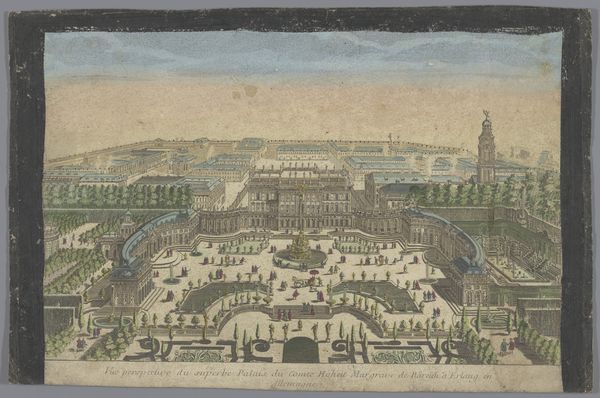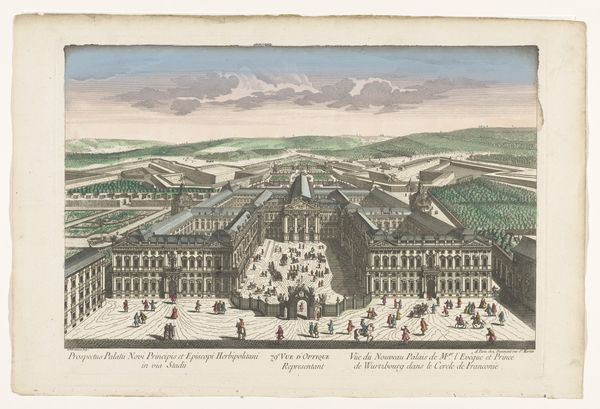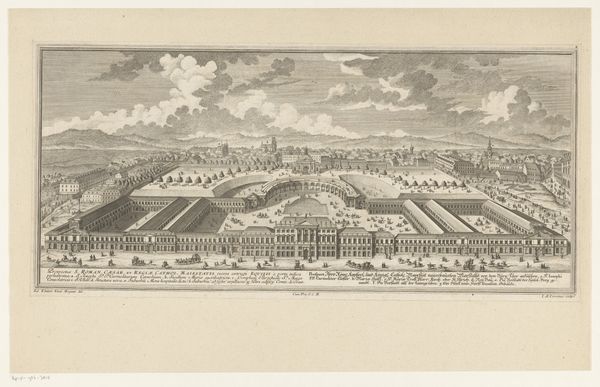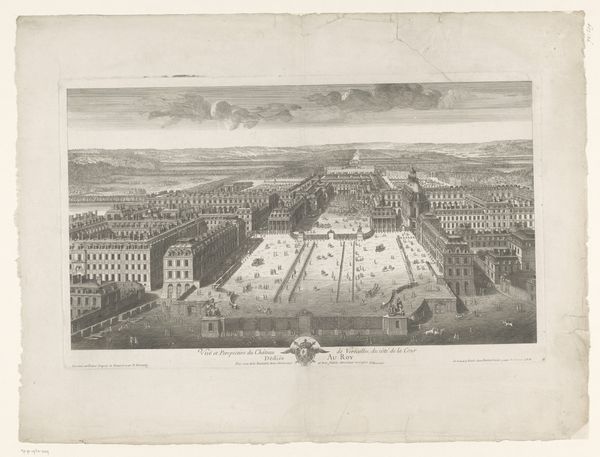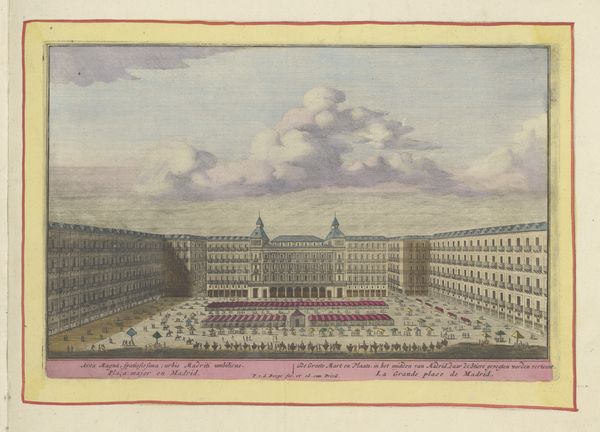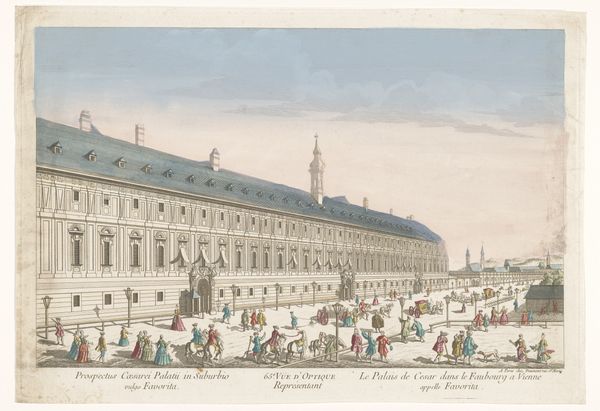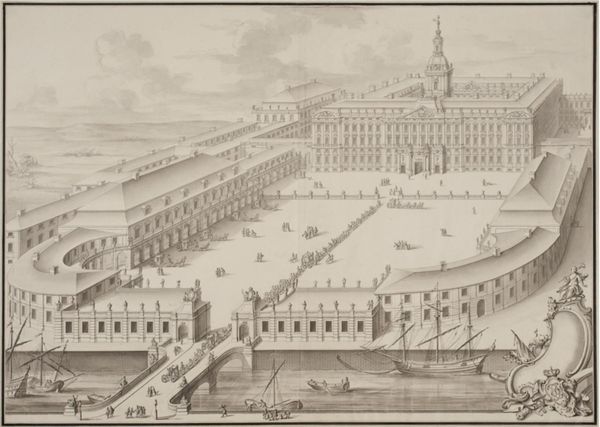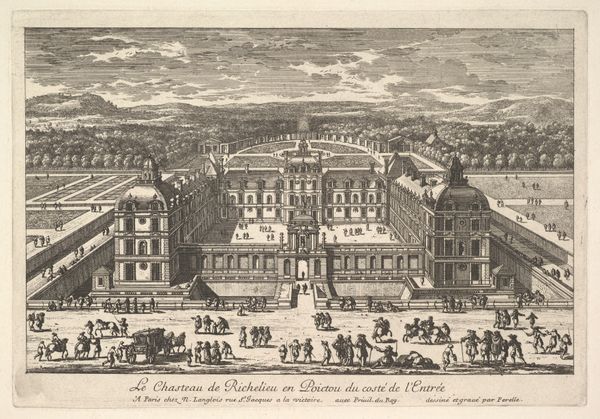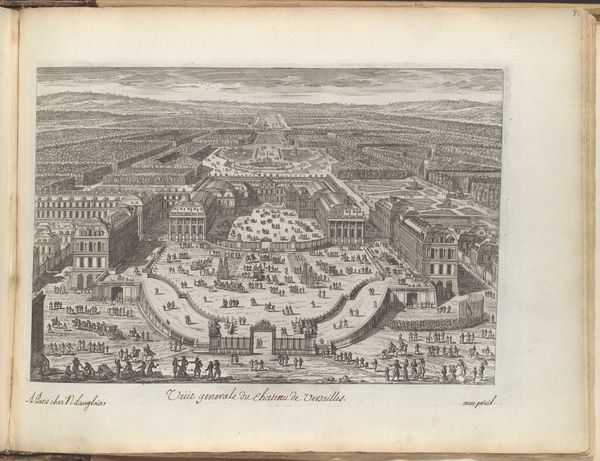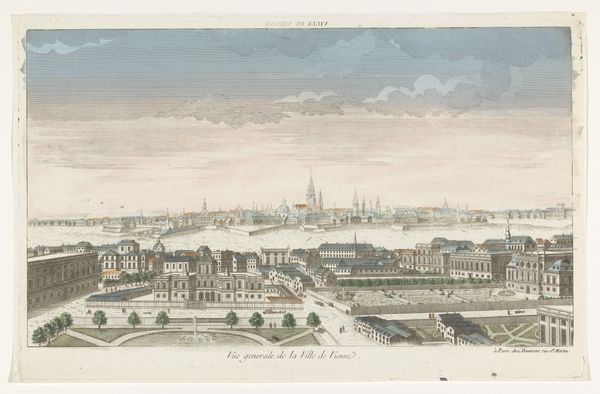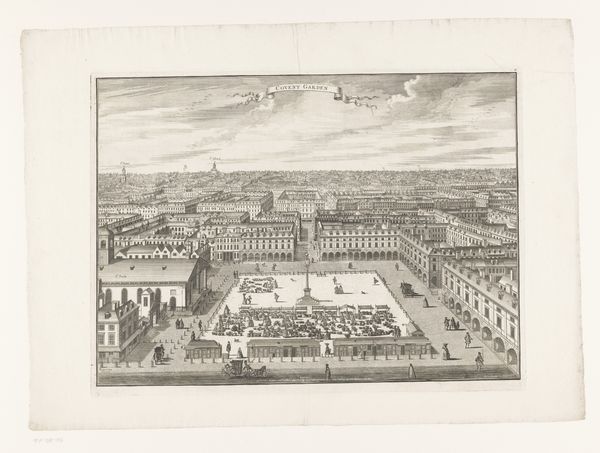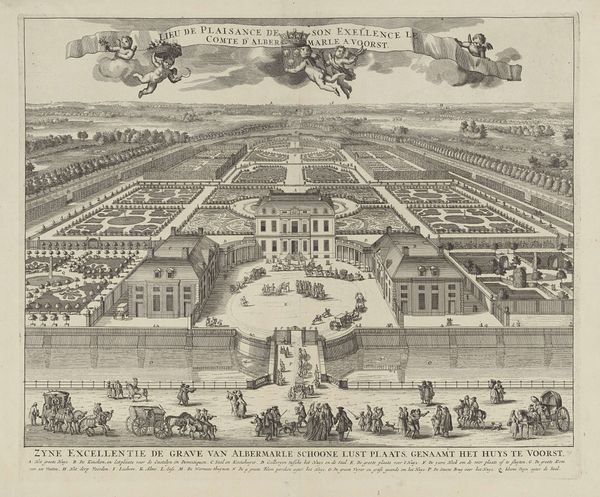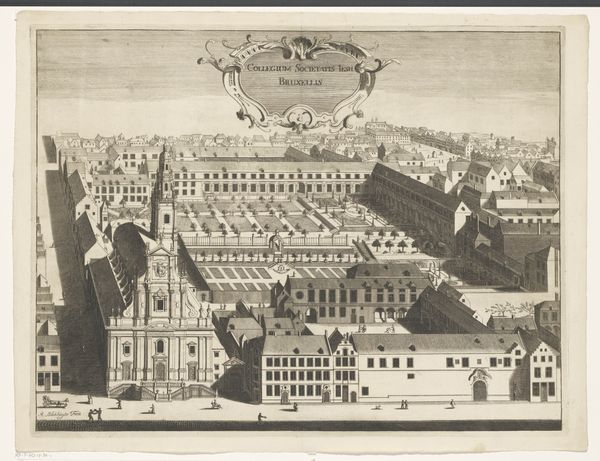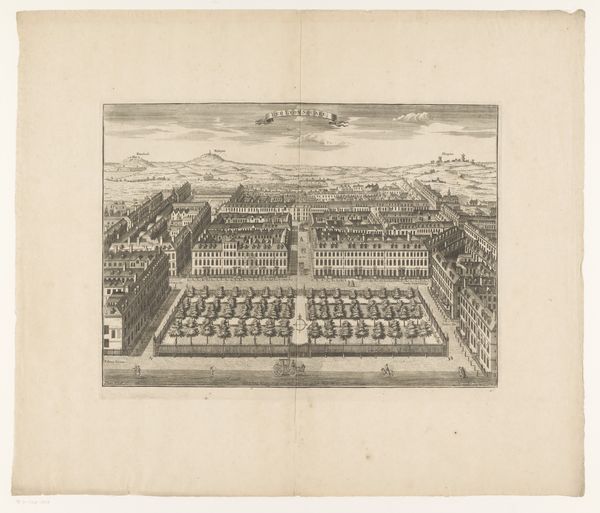
print, engraving, architecture
#
baroque
# print
#
landscape
#
cityscape
#
engraving
#
architecture
Dimensions: height 288 mm, width 419 mm
Copyright: Rijks Museum: Open Domain
Curator: This engraving from the 18th century depicts the Palace of the Margrave of Bayreuth in Erlangen. Immediately, I'm struck by the incredible detail, especially in rendering of depth across such a wide vista. Editor: It feels almost utopian, doesn’t it? This ordered, structured space speaks of power, absolute and refined. Curator: Indeed. Note how the perspective draws our eye directly to the palace, its facade a complex grid of windows and classical elements. This carefully constructed composition underscores the inherent hierarchy and authority represented by the building. Semiotically, we see power encoded in its design. Editor: I see that power, yes, but also its limitations. The tiny figures populating the gardens – are they truly enjoying this space or merely acting as props in a scene staged for the elite? What does such rigid order say about freedom and access for the people? Curator: Interesting points. Technically, the precision of line, achieved through engraving, serves to reinforce that sense of order. Each tree, each stone, is carefully delineated. Editor: But even that precision speaks to the controlling impulses of the period, doesn't it? An impulse to categorize and master nature, to bend it to human will. The perfect right angles, the symmetrical patterns – it’s a vision of dominance imposed onto the landscape. We might ask, who benefited from this display, and who was excluded? Curator: True, the formal garden embodies ideals of control and privilege. Considering the print as an artifact within broader societal contexts expands our understanding considerably. Editor: Precisely. Engaging with history reveals how aesthetics can function as ideology. This isn’t simply a beautiful scene. It's a powerful statement. Curator: Well, contemplating the Palace, our conversation reveals just how much is visually communicated by its careful design and the deliberate rendering of its setting. Editor: Absolutely. And how a critical approach enables us to recognize not only aesthetic values but also latent power structures at work.
Comments
No comments
Be the first to comment and join the conversation on the ultimate creative platform.
